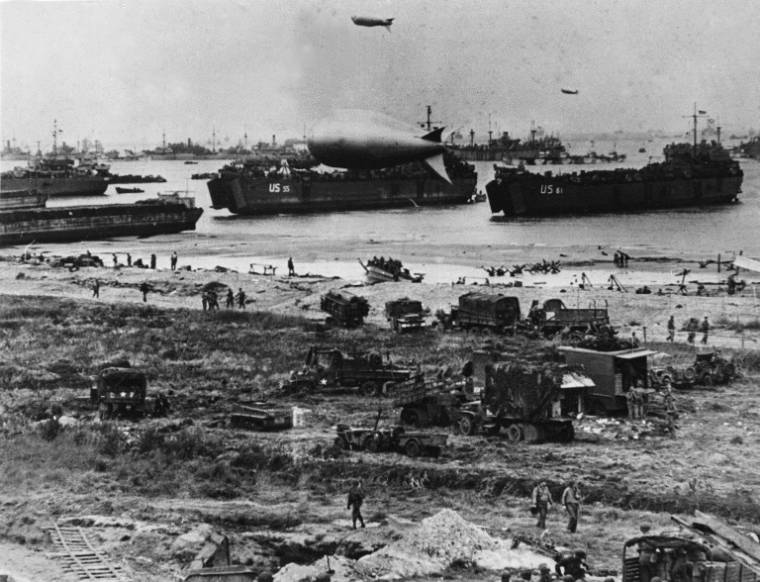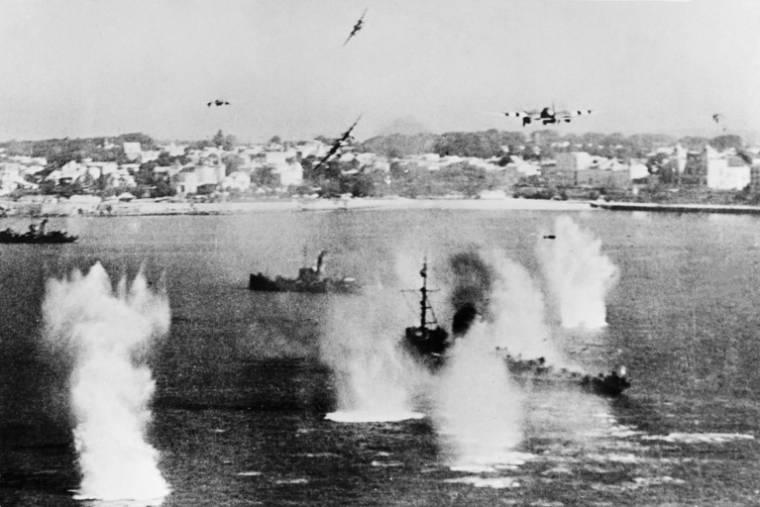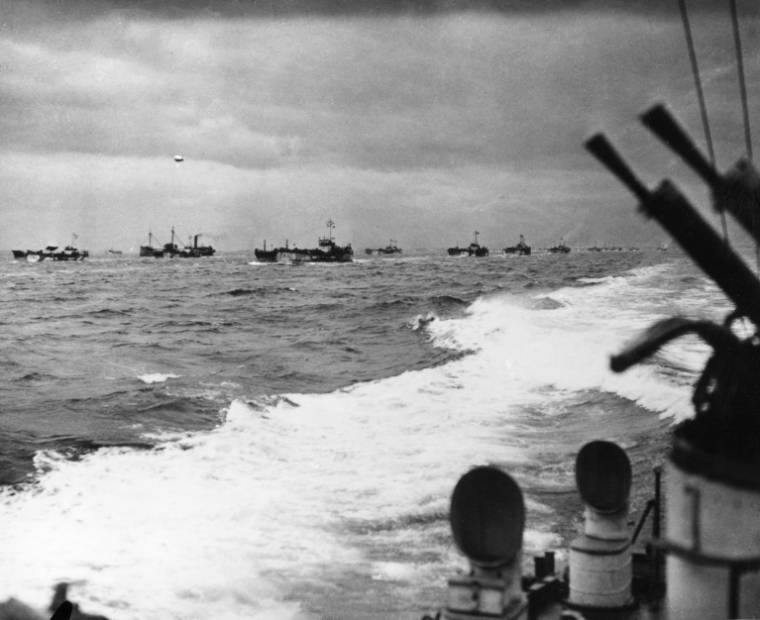The wreck of a ship destroyed in the port of Le Havre in September 1945, during the Second World War (AFP / -)
The Courbet, Centurion, Grief… These French, English or German warships have been resting off the coast of Normandy for 80 years. A divers’ paradise, some 150 wrecks little known to the general public are today protected and listed with a view to their UNESCO listing with the D-Day beaches.
“Due to the number of sites concerned and their variety, there is no historical event so well represented by these underwater remains,” underlines Cécile Sauvage of the Department of Underwater and Underwater Archaeological Research of the Ministry of Defense. Culture (Drassm).
“They are not all well preserved but very varied and very representative of the means used during the Landing,” explains this archaeologist in charge of their inventory for the last ten years.
Over 2,000 km2, around 120 destroyers, minesweepers, tugboats, artificial harbor caissons, barges and footbridges for disembarking troops and equipment on the beaches… as well as around thirty amphibious tanks are today a delight for divers.
They can thus explore the remains of the Broadsword Empire. This British cargo ship for transporting soldiers and barges hit two mines off Omaha Beach in July 1944, killing seven and injuring 170.
At the bottom of the Channel are the torpedoed boats and those, out of service, sunk to serve as breakwaters. These artificial protections, called “blockships”, made it possible to unload the equipment more easily.

Landing of Allied troops at Utah Beach, Sainte-Marie-du-Mont, in the Manche, on June 6, 1944, during the Second World War (Imperial War Museum / -)
In the winter of 1944, the cleaning of the five D-Day beaches began. English, Belgian and other companies set up from Sainte-Mère-Eglise to Ouistreham to take copper, brass or bronze from the boilers and condensers of ships.
They are refloated and destroyed on the beach or sent abroad, the largest pieces remaining at the bottom of the water where they are cut up.
Millions of tonnes of scrap metal end up in the blast furnaces of Caen, but also in Belgium and England.
– Tanks, torpedoes, bathtub… –
Once the beaches have been returned to summer visitors who can still find a rusty shell or the remains of a barge in the sand today, the scrap dealers move away from the coast to dismantle other wrecks.

Bombing of enemy ships by Allied forces in June 1944 to prepare for the Landings, on an undefined site, during World War II (US National Archives / -)
A few like Gabriel Serra are starting to keep pieces. Caught in the game, they became real collectors to such an extent that Jacques Lemonchois ended up opening a museum of underwater wrecks from the Landings in Commes, near Bayeux.
He brought up, covered in mud, a tank trailer, German torpedoes, machine guns, sextant, radar reception antenna… but also many everyday objects such as beer bottles, clothes, toothbrush or bathtub.
In one tank were kept the shoes and other items belonging to pilot John Glass. The scrap dealer found him in the United States and he came to see his tank again at the museum to which he bequeathed various personal effects.
By taking an interest in these ships, “the scrap dealers made it possible to identify the wrecks. This was not easy because once scrapped, they no longer resemble much, whereas those of 14-18, more wide, are beautiful to visit”, explains Jean-Luc Marchais in Courseulles-sur-Mer. This former diver worked with Jacques Lemonchois until the end of scrapping in the early 1990s.

Allied troops at sea before the Landing in June 1944 in Normandy (AFP / -)
The Caen Plongée club then took an interest in wrecks, before continuing this inventory with the Drassm. On this basis, France is a candidate in 2018 for the inclusion of the wrecks and adjoining beaches on the UNESCO world heritage list.
In January, it will submit a more complete file, produced by the Normandy region, promoting these remains: descriptive sheets for 21 wrecks (https://archeologie.culture.gouv.fr/epaves-debarquement/fr/fiches-epaves-plongeurs ), videos from certain sites (https://www.youtube.com/@ProjetAMI)…
Because time is running out. Weakened after being cut up by scrap dealers, these wrecks eventually collapsed, trapping shells, ammunition and various objects that it is forbidden to remove, as well as human remains.
“It’s important to study this heritage now,” warns archaeologist Cécile Sauvage. “The metal wrecks are subject to corrosion and will no longer be there in a few decades.”
